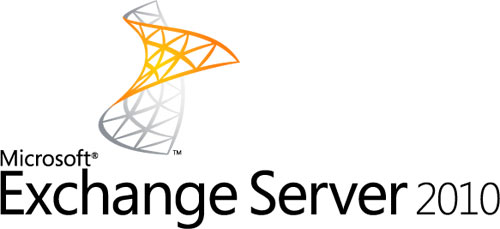Enterprise e-mail management with Exchange Server 2010
Exchange Server is a server software developed by Microsoft that specializes in e-mail solutions and information exchange within businesses.
In Vietnam, Exchange Server accounts for 80% market share in large enterprises, 73% of medium enterprises and 41% in education networks. In Exchange 2010, Microsoft has added new features to help administrators and employees handle e-mail archiving for easy control and easy search.
The internal control department can pre-set sample rules and apply them to all employees, ensuring they comply with the company's regulations. In addition, Exchange 2010 allows authorized users to search for information on different mailboxes.

In previous versions, administrators could apply RMS (Right Management Services) to secure information on each individual e-mail. The ILP (Information Leakage Protection) function on the 2010 version is more efficient thanks to automatic data protection based on rules created by administrators.
A new capability of Exchange 2010 is to enable OCS integration with Outlook Web App, enabling users to chat, make phone calls, share screens or make conference calls (group conferences via phone) directly. with colleagues.
Exchange Server 2010 reads / writes e-mail to hard disk 70% faster than 2007 version, allowing to store up to 100,000 entries per folder. As a result, businesses can apply low-cost storage systems such as SAS, SATA instead of the only option to run on expensive SAN (Storage Area Network) in previous versions.
You should read it
- BlackBerry Enterprise Server 5.0 supports Exchange 2010
- Email: Differences between POP3, IMAP and Exchange
- How to set up SMTP server to send email using Outlook.com address
- Configure, set Incoming and Outgoing Email on SharePoint 2010 - Part 2
- Configure Exchange 2007 or 2010 to forward email to the secondary domain
- Configure, set Incoming and Outgoing Email on SharePoint 2010 - Part 3
- How to set up an IMAP server for an Outlook.com account
- 7 ways to filter, classify and search effective email
May be interested
- Exchange Server 2010: many outstanding improvements
 after windows 7 officially launched, all the attention of the tech community continued to pour into microsoft's next 'brand name' product, exchange server 2010 equipped with many new features and significant improvements from 2007 version.
after windows 7 officially launched, all the attention of the tech community continued to pour into microsoft's next 'brand name' product, exchange server 2010 equipped with many new features and significant improvements from 2007 version. - Install and use Claws Mail in Windows
 in this article, i will show you a client email solution that overcomes poor performance or slows down the user's computer system, claws mail.
in this article, i will show you a client email solution that overcomes poor performance or slows down the user's computer system, claws mail. - Install and configure the solution to handle email on TMG 2010 Firewall - Part 1: Installation
 in this article we will show you how to install and configure an email handling solution on tmg 2010 firewall.
in this article we will show you how to install and configure an email handling solution on tmg 2010 firewall. - Instructions for installing MDaemon Mail Server
 mdaemon mail server is one of the most comprehensive mail server system solutions available for companies and businesses of different sizes.
mdaemon mail server is one of the most comprehensive mail server system solutions available for companies and businesses of different sizes. - Install and configure email handling solutions on TMG 2010 Firewall - Part 2: E-Mail Policy
 in part 2 of the install and configure email handling solution on this tmg 2010 firewall, we will show you how to configure email protection policies.
in part 2 of the install and configure email handling solution on this tmg 2010 firewall, we will show you how to configure email protection policies. - Install and configure email handling solutions on TMG 2010 Firewall - Part 3
 in this section, i will show you what you can do when configuring the anti-spam features on the tmg 2010 firewall.
in this section, i will show you what you can do when configuring the anti-spam features on the tmg 2010 firewall.






 BlackBerry Enterprise Server 5.0 supports Exchange 2010
BlackBerry Enterprise Server 5.0 supports Exchange 2010 Transfer from Linux Mail Server to Exchange Server 2007 (Part 1)
Transfer from Linux Mail Server to Exchange Server 2007 (Part 1) Limit sending and receiving mail in Exchange 2007
Limit sending and receiving mail in Exchange 2007 Check mail in Exchange 2007
Check mail in Exchange 2007 Manage the Exchange Server 2007 log files - Part 3
Manage the Exchange Server 2007 log files - Part 3